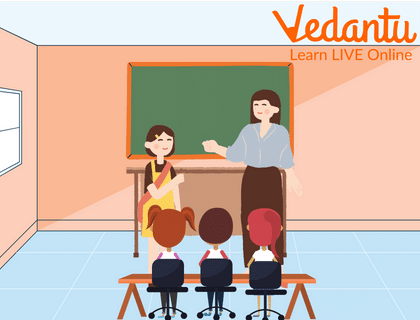The Short Misunderstanding Story in English for Kids

In this short, funny story named “Misunderstanding”, young children will come to know the humorous side of being understood or misunderstanding something/somebody.
Reading the story and analysing it for its morals.
Knowing the chucklesome side of the misunderstanding story summary and letting out a few giggles.
- Going through the misunderstanding short story analysis and understanding that whatever takes place in stories can very well be applied in real life activities and experiences.
Introduction To the Short Misunderstanding Story in English
In this “Misunderstanding” story, children will get to know how a simple misunderstanding turns out to be a funny conversation between a student and her teacher. It is one of the most popular stories for children when it comes to story-telling, though it comes in different versions, with the moral staying the same. It teaches children the importance of being patient in all kinds of situations and to make sure there is proper communication between people, as misunderstandings arise due to the lack of the two. This article attempts to offer insight into this story by delivering it in an easy-to-comprehend manner to make the misunderstanding story moral clear.
The Misunderstanding Story Summary in English
The story is about a student named Pam, who gets caught in a misunderstanding with her teacher. One fine day - like any other normal day - Pam’s cousin arrived at her school to pay her a short visit. Out of mild excitement, she had left the classroom to go converse with him. After a while, she came back to class. The teacher didn’t seem to have any problem with her leaving the classroom out of the blue and so, did not say anything as she was busy writing something on the black board. Pam did not speak a word either and silently went inside her classroom and returned to her seat.
After a short amount of time, the teacher finished writing and walked over to Pam’s desk. The teacher asked her who “he” was. Afraid that Pam had done something wrong, she fearfully replied that he was her cousin's brother. The teacher raised her eyebrows and asked her the same question, to which she was met with the same answer. Frustrated, the teacher repeated the question. By now, Pam was confused and gave her teacher the same answer.
Suddenly, the teacher raised her voice, explaining that she had been asking Pam who Galileo was. On hearing this, the whole class burst into peals of laughter, as both the teacher and Pam had come to the realisation that they had misunderstood each other.

The Graphical Representation of the Short Story “Misunderstanding” is illustrated Above
The Misunderstanding Story Moral
After giving this story a thorough read, most children will be quick to figure out the misunderstanding story moral as it contains a self-explanatory title as well as story. So it is easy to assume that the moral of the story is that misunderstandings will happen, that they are unavoidable under certain circumstances. However, what one can do is to attempt to clear it up, by questioning the situation again, calmly. Here, Pam automatically assumed that the teacher was talking about her cousin brother when in reality she was asking Pam questions related to her studies as she may have missed the class lecture when she exited the classroom to chat with her cousin brother.
The Misunderstanding Short Story Analysis
On close inspection, it should be understood that though the situation caused a misunderstanding, what caused it? Lack of communication and clarity. If the teacher would have put out her question clearly by asking who Galileo was, Pam would have been able to provide a better answer suited to the question. Or if Pam had asked who the teacher was talking about, that must have also helped avoid the misunderstanding. By the misunderstanding short story analysis, children will be able to come up with reasonable solutions, encouraging them to think logically as well as empathetically during intense and simple situations alike.
Note To Parents
Yes, story-telling is a very fun concept where both the teller and the listener gain lots of joy from it. It is also a very good idea to teach valuable lessons, morals and stories to children in an interesting and creative manner so that they are motivated to learn this and more in a positive sense. Children can do so by giving the misunderstanding story summary a good read. Story-telling is one of the most efficient ways to teach important lessons to your child as well as improve their bonding with their family. It is a much loved concept and is used by almost every parent to amuse their children. Telling them stories will also help them develop a love for stories, fueling their interests and encouraging them to pick up the well appreciated habit of reading.


FAQs on The Short Misunderstanding Story in English for Kids
1. Why did Pam leave her classroom?
Pam left her classroom to pay a visit to her cousin's brother who had come to her school to see her.
2. Who is the author of the story “Misunderstanding”?
The author of the story is currently unknown.
3. Why was Pam afraid of her teacher?
Pam was afraid of her teacher as she thought she had done something wrong when she left the classroom to go see her cousin's brother.
In this short, funny story named “Misunderstanding”, young children will come to know the humorous side of being understood or misunderstanding something/somebody.
Reading the story and analysing it for its morals.
Knowing the chucklesome side of the misunderstanding story summary and letting out a few giggles.
- Going through the misunderstanding short story analysis and understanding that whatever takes place in stories can very well be applied in real life activities and experiences.




